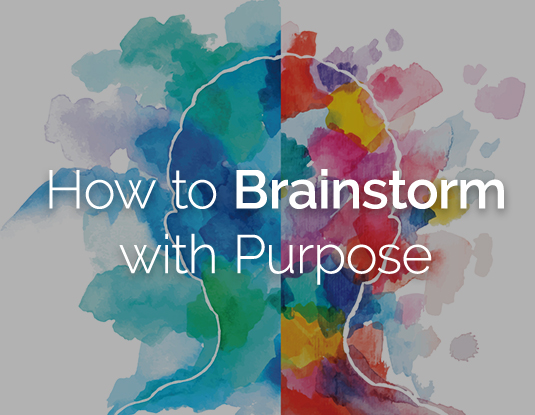deccatalkingpoints@decdesign.com
How To Brainstorm With Purpose

At first, “brainstorming” sounds like forced collaboration. Although, once you break the ice and get employees thinking, you can often solve your company’s challenges. The best brainstorms however, require a mix of creative strategies to ensure you look at problems from every angle and come up with original solutions. Here are five exercises to help you accomplish just that.
1. The Take Away
The Take Away is a process of stripping down your thoughts. It counters the impulse to generate “kitchen sink” solutions. If you have a new product with a list of 12 key benefits, for instance, try to zero-in on what’s truly useful. Remove one benefit and see if your message is more focused despite being less comprehensive. If so, keep stripping them away until you arrive at a short yet meaningful list of benefits.
2. Word Trees
Now, try the opposite with a Word Tree. Start your Word Tree by listing a few key words or terms related to a broad concept. Then, for each word, start a new list of related words. Keep branching out as you go until you run out of words and ideas. Doing this opens new pathways for creative exploration.
3. Oblique Strategies
It’s an app. It’s a website. It’s a deck of cards. But what Oblique Strategies really is, is a tool that provides a series of random prompts that help you break through creative blocks. These prompts range from simple instructions (work at a different speed), to counterintuitive suggestions (follow your worst impulse), to enigmatic statements (water). Used with an open mind, Oblique Strategies can be a fun way to challenge your team to think differently.
4. The 5 Whys
The 5 Whys exercise is a way to identify the root of a problem and find a resourceful solution. First, turn your problem into a “why” question. (Why doesn’t our story resonate with the market?) Then list your answers. Select one of those answers, and ask a “why” about it. Continue until you reach your fifth generation of “whys.” By this point, you’ll likely have encountered a helpful realization or inspiration.
5. Blue Sky
The previous exercises involve at least some form of constraint. The Blue Sky exercise asks you to envision what you might do or create if you had no limitations. Then you formulate what would have to be true for you to achieve your vision. Ask yourself what you can change. Can you make any of those things true? Are there interim goals you can meet? Can you break your project into steps that are easier to accomplish?
Whichever exercises you use, keep this in mind—the result of any creative problem-solving session is only the beginning. Your ability to follow through on your ideas will determine your ultimate success.
Based on Bored With Brainstorming? Try These Five Creativity Boosters by Sandra Stewart.
